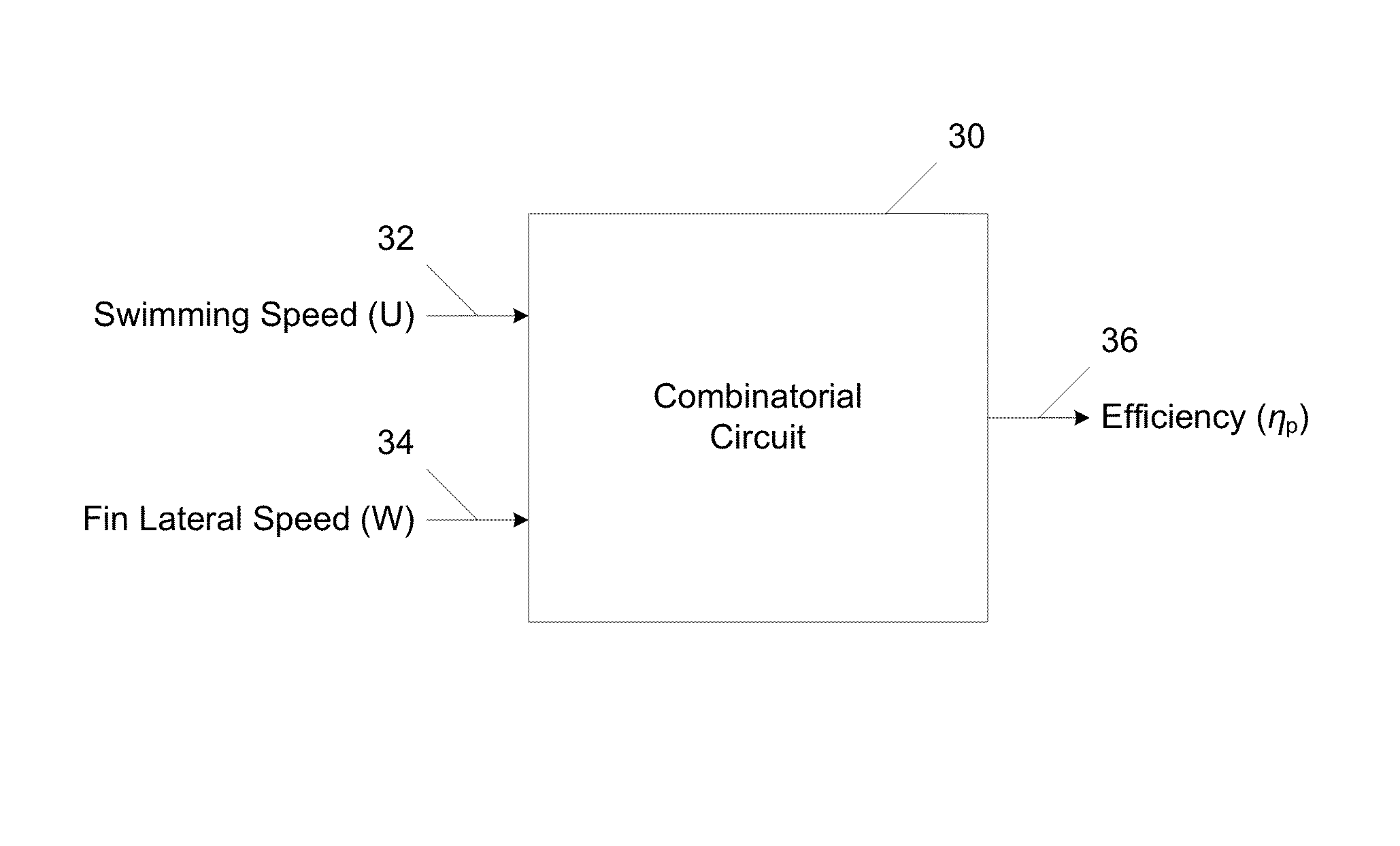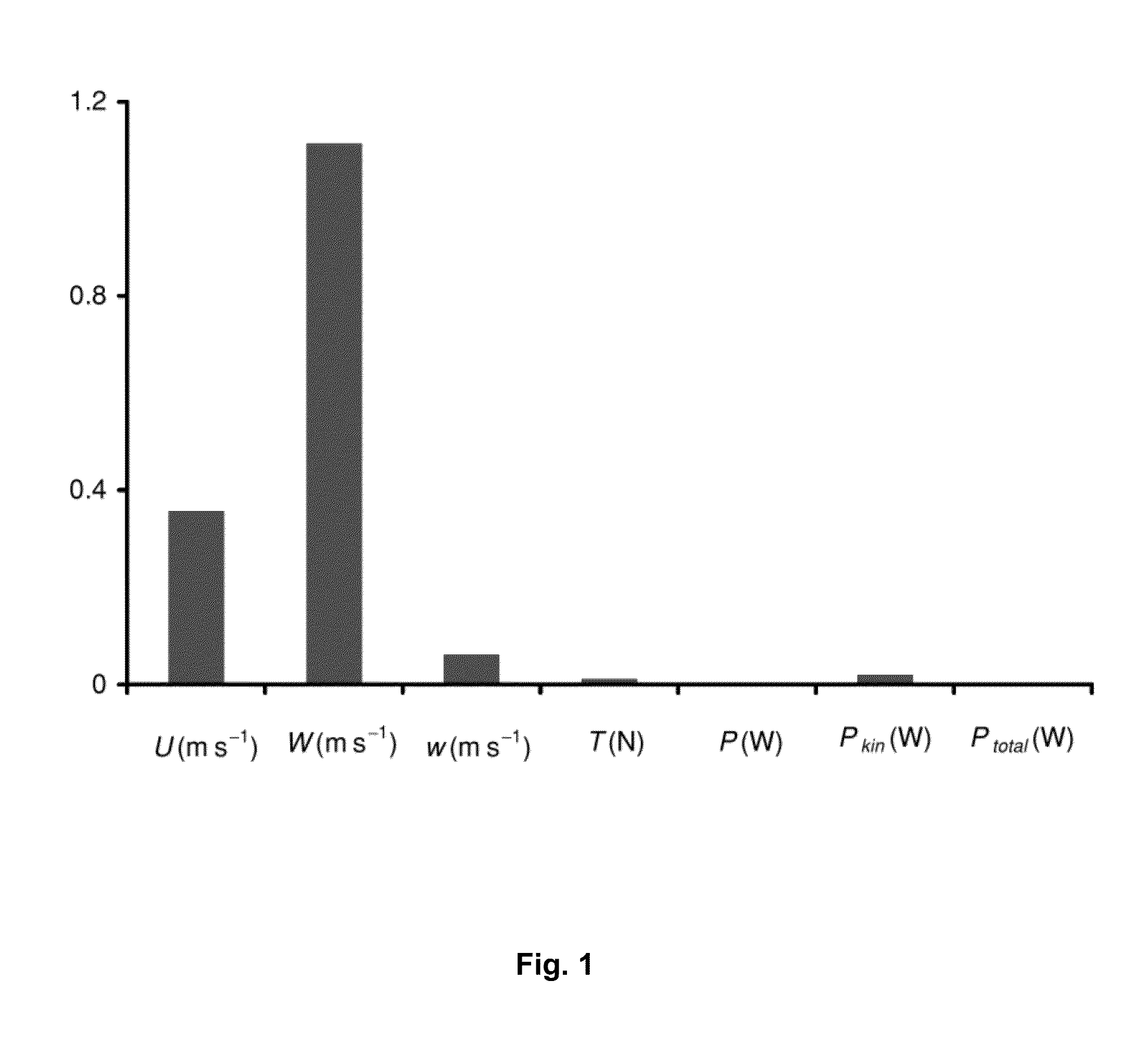Modeling efficiency over a range of velocities in underwater vehicles
a technology of underwater vehicles and efficiency, applied in the field of underwater vehicles, can solve the problems of limited battery life and payload capacity, likely functional disadvantages, etc., and achieve the effects of reducing the number of required inputs, reducing the energy drain on the battery, and high propulsive efficiency values
- Summary
- Abstract
- Description
- Claims
- Application Information
AI Technical Summary
Benefits of technology
Problems solved by technology
Method used
Image
Examples
experimental implementation
[0041
[0042]Three circuit modules were designed: (1) fin lateral speed versus swimming speed giving propulsive efficiency (FIG. 3), (2) propulsive efficiency versus fin lateral speed giving swimming speed (FIG. 4A) and (3) propulsive efficiency versus swimming speed giving fin lateral speed (FIG. 4B). The experimental implementation (summarized in FIGS. 3, 4A and 4B and consisting of 1918, 2318 and 2362 gates respectively) utilizes inverters as well as logic circuits of two, three and four 6-bit and 7-bit inputs. Each module is composed of combinatorial logic and is activated by two inputs and produces one output. Each module represents the entire array of swimming efficiencies, swim speeds and fin speed efficiencies illustrated in FIG. 2.
[0043]In FIG. 3, swimming speed (U) is input at 32 into combinatorial circuit 30 and fin lateral speed (W) is input at 34. Propulsive efficiency (ηp) is output at 36 from combinatorial circuit 30. In an embodiment, inputs 32 and 34 consist of 6-bit ...
PUM
 Login to View More
Login to View More Abstract
Description
Claims
Application Information
 Login to View More
Login to View More - R&D
- Intellectual Property
- Life Sciences
- Materials
- Tech Scout
- Unparalleled Data Quality
- Higher Quality Content
- 60% Fewer Hallucinations
Browse by: Latest US Patents, China's latest patents, Technical Efficacy Thesaurus, Application Domain, Technology Topic, Popular Technical Reports.
© 2025 PatSnap. All rights reserved.Legal|Privacy policy|Modern Slavery Act Transparency Statement|Sitemap|About US| Contact US: help@patsnap.com



